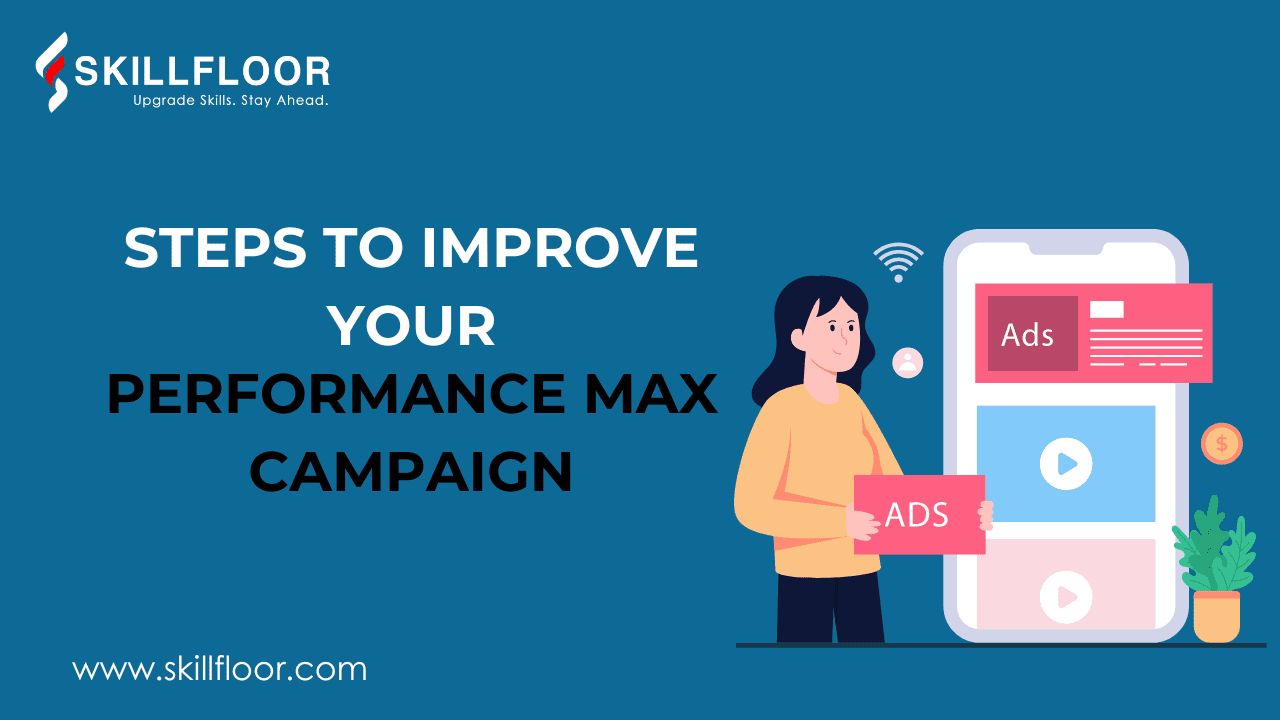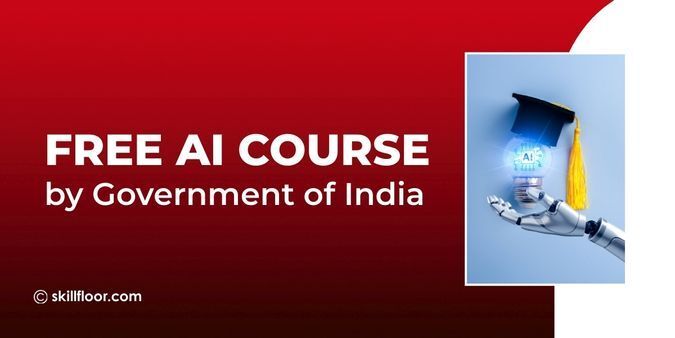How to Improve Your Google Ads Performance Max Campaign
Boost your Google Ads Performance Max campaign with these expert tips. Learn how to optimize for better reach, conversions, and ROI.

Are you a company owner trying to grow your internet clients? You may have heard of Google Ads Performance Max Campaigns. By letting Google's intelligent algorithm manage ad placements throughout its extensive network, which includes search, YouTube, Gmail, and more, these campaigns assist businesses in making the most of their digital marketing expenditures.
Performance Max may be used for purposes other than e-commerce, even though it superseded Smart Shopping. However, for the sake of this article, we will concentrate on maximizing Performance Max for e-commerce advertisements, which necessitates submitting product feeds through an active Google Merchant Center.
What Is Performance, Max?
Performance Max is a type of Google Ads campaign that helps organizations maximize their advertising through automation. It makes it possible for Google's intelligent system to target the appropriate demographic for ad placements across all of its platforms, such as YouTube, Gmail, and search. Businesses may now more easily optimize their ad effectiveness with less human labor.
What does Performance Max Do?
Thanks to Performance Max, your ad placements are automated throughout the whole Google network, including search, YouTube, Gmail, and more. It uses machine learning to determine which audiences, ad formats, and locations will work best together to help you reach your campaign objectives. In essence, it assists in optimizing your adverts to provide better outcomes with less labor-intensive work.
Benefits of Google Ads Performance Max Campaigns
-
Increased Reach: Google Ads Performance Max Campaigns enable your advertisements to show on several platforms, like Gmail, YouTube, and Search, to help you reach a larger audience without requiring different campaigns.
-
Improved Efficiency: Performance Max Campaign reduces your time while still optimizing for the greatest results throughout Google's network by automating many of the labor-intensive tasks, such as bidding and ad placements.
-
Maximized Conversions: By displaying your advertisements to the right people at the right time, machine learning is used with Google Ads Performance Max Campaigns to identify the appropriate audience and ad placements, improving conversions.
-
Cross-Channel Performance: Ads that are consistent and compelling wherever your audience may be online may be promoted for your business with the Performance Max Campaign, which lets you advertise across several Google channels with a single campaign.
-
Better Insights: Google Ads Performance Max Campaigns offer comprehensive reports that let you see what's working and make continual improvements to your strategy and performance.
-
Smart Budget Allocation: Performance Max Campaign optimizes your budget automatically, directing funds to the highest-performing ad placements, ensuring your money is spent where it will have the most impact.
8 Steps to Improve Your Google Ads Performance Max Campaign:
1. Define Your Goals Clearly
The first step to a successful Google Ads Performance Max Campaign is precisely defining your objectives. Whether your goal is to raise brand recognition, create leads, or improve sales, establishing quantifiable, precise goals can assist steer your campaign in the correct direction and make sure your efforts are in line with your company objectives.
Once you have a clear understanding of your objectives, you may adjust the Performance Max Campaign parameters to meet these needs. This can help you get the most out of your advertising efforts by helping you set up conversion tracking, optimize bidding methods, and create advertisements that connect with your target demographic.
2. Improve Your Creative Assets
A successful Google Ads Performance Max campaign depends on improving your creative assets. Your advertisement will perform better on several platforms and draw more attention if it has strong, captivating images and content. Concentrate on:
-
Make use of clear, captivating, and relevant images and photos for your Google Ads Performance Max campaign.
-
Compose succinct, engaging advertising language that appeals to your target market, motivates action, and supports your campaign's objectives.
-
Make sure your messaging and images are in line with your brand to foster brand identification and a unified user experience across all platforms.
-
To enhance performance and find out what connects most with your audience through experimentation, test and refresh creative assets often.
3. Use Strong Audience Signals
Your Google Ads Performance Max Campaign must be successful if you are using strong audience signals. Google's machine learning is guided by audience signals to provide relevant advertising to the appropriate users. Your advertising will be more likely to be seen by users who are most likely to interact with them and convert if you give precise and comprehensive signals.
-
Use information like demographics, hobbies, and habits to define distinct target groups that will aid Google in locating the ideal visitors for your campaign.
-
Make use of your consumer data to generate targeted audience signals. For more accuracy, target email subscribers, previous website visitors, or comparable audiences.
-
Evaluate your audience signals over time by looking at your performance information. Utilize this knowledge to enhance and modify targeting according to what is effective.
-
To improve your targeting even further and more efficiently reach relevant consumers, make use of Google's audience targeting capabilities, such as affinity and in-market audiences.

4. Optimize Conversion Tracking
Evaluating the effectiveness of your Google Ads Performance Max Campaign requires optimizing conversion tracking. This aids in your comprehension of which advertisements and tactics are generating significant actions, like sales or registrations. Your campaign will be laser-focused on reaching your business objectives if you measure conversions correctly.
-
Establish conversion activities (such as purchases, leads, or form submissions) that correspond with your objectives. Ensure that these activities align with your company's goals.
-
For an easier time setting up tracking, use Google Tag Manager. It guarantees data accuracy and streamlines the tracking code implementation procedure.
-
Analyze conversion statistics regularly to spot patterns and insights. By using what's generating the most useful actions, you may use this to optimize your campaign.
-
To acquire a complete view of user interactions and make smarter optimization decisions, track various conversion kinds, such as macro and micro conversions.

5. Test Different Ad Formats
Optimizing the performance of your Google Ads Performance Max Campaign requires testing various ad types. Different audiences interact with different kinds of material, so it's helpful to try out several formats to see which ones work the best.
-
Try out some video advertisements to draw viewers in right away. Higher engagement and greater brand memory are frequently facilitated by video content.
-
Try using responsive display advertising, which can perform better and have a wider audience by adapting to various locations within the Google network.
-
Use Google Search text advertisements to target users based on their intents. They are effective in attracting customers who are actively looking for your goods or services.
-
A/B test various formats to evaluate how well they function. This will assist you in determining which forms encourage engagement and conversions the best.
6. Regularly Review and Adjust Bidding Strategies
Optimizing the success of your Google Ads success Max Campaign requires regular reviews and adjustments to your bidding tactics. It's critical to monitor bidding as it affects both how much you pay and how well your advertisements are seen by prospective buyers.
-
Ensure that your bids are in line with your campaign goals and budget by keeping an eye on cost-per-click (CPC) and cost-per-acquisition (CPA).
-
To maximize ROI, bids should be adjusted depending on performance data, raising them on high-performing segments and decreasing them on failing ones.
-
To enable Google's algorithm to modify bids in real-time based on your objectives, try out several smart bidding tactics like target CPA or maximize conversions.
-
Periodically review your bidding strategy to make sure it still supports the goals of your campaign and make any necessary adjustments as your company's needs change.
7. Optimize for Device Performance
By optimizing for device performance, you can be confident that the correct users are seeing your Google Ads Performance Max Campaign on the devices that produce the greatest results. It's crucial to adjust your approach since different audiences could react differently on tablets, desktop computers, and mobile devices.
-
Determine which devices are generating the most return on ad spend (ROAS) and converting the most by analyzing device-specific performance.
-
In order to adjust bids depending on device performance, bids should be increased on devices that perform well and decreased on underperforming devices.
-
To enhance user experience and engagement across various platforms, develop device-specific ad formats, such as mobile-friendly advertisements for smartphones.
-
To guarantee quick loads and well-designed landing pages that offer a smooth user experience, test landing pages on desktop and mobile devices.

8. Keep Testing and Optimizing
For your Google Ads Performance Max Campaign to be effective, keep refining and testing it. You may adjust your strategy for better outcomes by doing regular testing to see what resonates with your audience.
-
To compare results, A/B test various ad versions. Test different ad language, images, and forms frequently to see which appeals to your target demographic the best.
-
Track performance indicators including ROAS, Click-Through Rate (CTR), and conversion rate. Utilize these insights to modify the components of your campaign as necessary.
-
Try a variety of audience signals and segments as you experiment with audience targeting to find out which audiences provide the most value conversions.
-
Remain adaptable and modify your plan in light of the information. Frequent adjustments guarantee your campaign's continued relevance and efficacy.
Key differences between Performance Max Campaign and other Google Ads campaign types:
|
Feature |
Performance Max Campaign |
Other Campaign Types (e.g., Search, Display, Video) |
|
Ad Placement |
Automatically places ads across all Google networks (Search, YouTube, Display, Gmail, etc.) |
Typically limited to a specific network, like Search or Display |
|
Automation Level |
Highly automated, with Google’s machine learning optimizing bids, placements, and targeting |
Varies by type; more manual control required for targeting and bids |
|
Audience Targeting |
Uses audience signals and Google’s AI to find the best audience |
Manual targeting based on keywords, demographics, and interests |
|
Creative Flexibility |
Mixes and matches creative assets (images, text, video) to optimize performance |
Ad formats are usually static, tailored to the specific campaign type |
Enhancing your Google Ads Performance Max Campaign may have a significant impact on the performance of your digital marketing efforts. Better outcomes may be attained by defining clear objectives, making the most of your creative resources, and honing in on your audience signals. You may optimize performance by testing various ad types regularly, modifying your bidding tactics, and monitoring conversions. Maintaining your Google Ads Performance Max Campaign relevant by regular tuning and monitoring can help you maximize your ad expenditure, target the proper audience, and boost conversions.




























































